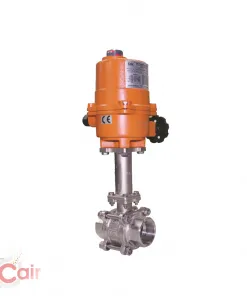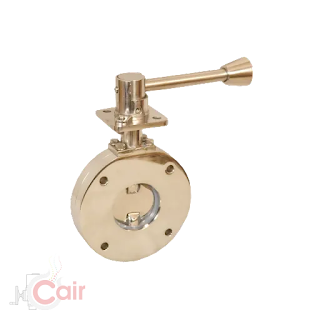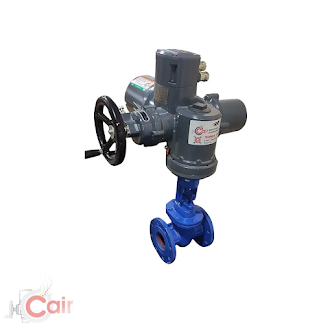Motorized Ball Valve: An Innovative Solution For Your Industry
Motorized ball valves are an innovative and efficient solution for industries that require precise control of fluid or gas flow. These valves use a motor to rotate a ball within the valve body, allowing for accurate regulation of flow. Motorized ball valves are ideal for applications that require frequent adjustments or where manual operation is difficult or impractical. They are also widely used in automation systems where remote control is necessary.
The benefits of motorized ball valves include energy efficiency, accurate and repeatable flow control, and reduced maintenance requirements. Additionally, motorized ball valves are available in a wide range of materials, sizes, and configurations to suit different applications, making them a versatile solution for various industries, including HVAC, chemical, pharmaceutical, and food and beverage.
With the ability to operate at high pressures and temperatures, motorized ball valves offer a reliable and durable solution for even the most demanding applications. Overall, motorized ball valves provide an innovative and efficient solution for industries that require accurate and reliable flow control, saving time and money in the long run.
What are the Benefits of Motorized Ball Valves?
Motorized ball valves are a popular choice in industrial applications due to their numerous benefits. One of the main advantages of motorized ball valves is their accuracy and reliability in regulating fluid or gas flow. They offer precise flow control, which can be automated, making them ideal for processes that require frequent adjustments or remote control.
Additionally, motorized ball valves are energy-efficient since they consume less power compared to other valve types, reducing overall operational costs. They are also low-maintenance, as their simple design requires fewer moving parts, leading to reduced downtime and repair costs. Motorized ball valves are available in a wide range of materials, sizes, and configurations, allowing them to be used in various industries such as chemical, pharmaceutical, HVAC, and food and beverage.
They are also capable of handling high pressures and temperatures, making them suitable for demanding applications. Finally, motorized ball valves are easy to install and integrate with existing control systems, making them a cost-effective solution. In summary, the benefits of motorized ball valves include accuracy, reliability, energy efficiency, low maintenance, versatility, durability, and ease of installation, making them an ideal solution for industrial applications that require efficient and precise flow control.
How Can You Choose the Right Motorized Ball Valve for Your Industry?
Choosing the right motorized ball valve for your industry requires careful consideration of several factors. Here are some essential factors to consider when selecting a motorized ball valve:
Application: Consider the application requirements, including the fluid or gas being controlled, the required flow rate, and the operating temperature and pressure.
Valve Size: Ensure that the valve size is appropriate for the application to avoid flow restriction or excessive pressure drop.
Valve Type: Choose the appropriate valve type based on the application, including 2-way, 3-way, or 4-way motorized ball valves.
Materials: Consider the materials used in construction to ensure they are compatible with the fluid or gas being controlled and the operating environment.
Actuator Type: Choose the right actuator type based on the application requirements, including electric, pneumatic, or hydraulic.
Control Method: Determine the appropriate control method, including manual, automated, or remote control, based on the application needs.
Power Consumption: Consider the power consumption of the motorized ball valve to ensure it is energy-efficient and does not increase operational costs.
Certifications: Ensure that the motorized ball valve meets industry standards and certifications, such as NSF, UL, and CE.
Manufacturer: Choose a reputable and experienced manufacturer with a history of providing high-quality motorized ball valves for your industry.
In summary, choosing the right motorized ball valve for your industry requires careful consideration of factors such as application, valve size, valve type, materials, actuator type, control method, power consumption, certifications, and manufacturer. By selecting the appropriate motorized ball valve, businesses can ensure precise and efficient flow control, reduce maintenance costs, and increase overall productivity.
Why are Motorized Ball Valves an Essential Part of Your Operation?
Motorized ball valves are an essential part of many industrial operations due to their numerous benefits. They provide precise and accurate control of fluid or gas flow, making them ideal for critical processes that require frequent adjustments or remote control. Their automated functionality and reliability reduce human error, leading to increased efficiency and productivity. Motorized ball valves are also energy-efficient, reducing overall operational costs. They require low maintenance due to their simple design, leading to minimal downtime and repair costs.
Motorized ball valves are available in a wide range of materials, sizes, and configurations, making them suitable for various industries, including chemical, pharmaceutical, HVAC, and food and beverage. They are capable of handling high pressures and temperatures, making them ideal for demanding applications. Finally, motorized ball valves are easy to install and integrate with existing control systems, making them a cost-effective solution.
In summary, motorized ball valves provide numerous benefits, including precise control, automation, energy efficiency, low maintenance, versatility, durability, and ease of installation, making them an essential part of many industrial operations. Their reliability and accuracy make them an ideal solution for processes that require precise and efficient flow control, leading to increased productivity and profitability.
How Can You Ensure That Your Motorized Ball Valve is Installed Correctly?
Proper installation of a motorized ball valve is critical to ensuring its long-term performance and reliability. Here are some tips to ensure that your motorized ball valve is installed correctly:
Choose the Right Location: Select a location that is easily accessible and away from potential hazards such as extreme temperatures or corrosive chemicals.
Prepare the Site: Clean and dry the installation site, and ensure that the mounting surface is level and sturdy.
Assemble the Valve: Follow the manufacturer's instructions to assemble the valve, including mounting the actuator and connecting the wiring.
Connect the Plumbing: Connect the plumbing to the inlet and outlet ports of the valve, ensuring that the connections are tight and leak-free.
Test the Valve: Test the valve to ensure that it opens and closes correctly and that there are no leaks.
Configure the Control System: Configure the control system according to the manufacturer's instructions, including programming the actuator's limits and setting the control parameters.
Verify Electrical Connections: Verify that all electrical connections are secure and correctly wired, and that the power source is compatible with the actuator's requirements.
Install Safety Features: Install any necessary safety features, such as pressure relief valves, to protect the valve and surrounding equipment.
Document the Installation: Document the installation process, including the valve model, installation date, and any relevant information, for future reference and maintenance.
In summary, proper installation of a motorized ball valve involves selecting the right location, preparing the site, assembling the valve, connecting the plumbing, testing the valve, configuring the control system, verifying electrical connections, installing safety features, and documenting the installation process. By following these steps, businesses can ensure that their motorized ball valve is installed correctly and performs reliably, reducing maintenance costs and increasing operational efficiency.
What are the Maintenance Requirements for a Motorized Ball Valve?
Motorized ball valves require minimal maintenance due to their simple design and durable construction. However, regular maintenance is essential to ensure their long-term performance and reliability. Here are some maintenance requirements for a motorized ball valve:
Inspect the Valve: Regularly inspect the valve for any signs of wear, corrosion, or damage. Check the seals, gaskets, and O-rings for leaks and replace them if necessary.
Lubricate Moving Parts: Apply a suitable lubricant to the moving parts, such as the stem and ball, to ensure smooth operation and prevent corrosion.
Check the Electrical System: Inspect the electrical system, including the wiring, connections, and control system, for any signs of damage or wear. Test the actuator's operation and adjust the control parameters if necessary.
Clean the Valve: Clean the valve regularly using a suitable cleaning solution and a soft brush to remove any buildup or debris. Avoid using harsh chemicals or abrasive materials that can damage the valve.
Test the Valve: Regularly test the valve to ensure that it opens and closes correctly and that there are no leaks. Use a pressure gauge to test the valve's pressure rating and verify that it is within the manufacturer's specifications.
Document Maintenance: Document all maintenance activities, including the date, type of maintenance performed, and any relevant information, for future reference and maintenance planning.
In summary, motorized ball valves require minimal maintenance due to their simple design and durable construction. Regular inspection, lubrication, cleaning, and testing are essential to ensure their long-term performance and reliability. By following these maintenance requirements, businesses can ensure that their motorized ball valve operates efficiently and reliably, reducing downtime and maintenance costs.
How can you Troubleshoot a Motorized Ball Valve?
If a motorized ball valve is not functioning properly, troubleshooting can help identify the issue and determine the necessary repairs. Here are some steps to troubleshoot a motorized ball valve:
Check Power Supply: Ensure that the power supply to the valve is on, and the control system is functioning correctly. If there is no power supply, check the circuit breaker, fuses, or wiring for any issues.
Inspect Actuator: Inspect the actuator for any signs of wear or damage, such as corrosion or broken parts. Check that the actuator is securely mounted to the valve and is receiving power.
Check Control System: Verify that the control system is functioning correctly by checking the settings, connections, and wiring. If there are any issues, refer to the control system manual or contact a qualified technician for assistance.
Test Valve Functionality: Test the valve's functionality by manually turning the handle or using a wrench to operate the valve. If the valve operates correctly, the issue may be with the actuator or control system.
Check for Leaks: Check for leaks by inspecting the valve and its connections. If there are any leaks, tighten the connections or replace any damaged parts.
Check Valve Position: Verify that the valve is in the correct position by checking the position indicator or using a wrench to open and close the valve.
Consult Manufacturer's Manual: Consult the manufacturer's manual for troubleshooting tips and solutions specific to the motorized ball valve model.
In summary, troubleshooting a motorized ball valve involves checking the power supply, inspecting the actuator, testing the valve's functionality, checking for leaks, and consulting the manufacturer's manual. By following these steps, businesses can quickly identify and resolve issues with their motorized ball valve, reducing downtime and maintenance costs. If the troubleshooting steps are unsuccessful, it is recommended to contact a qualified technician for assistance.




Comments
Post a Comment